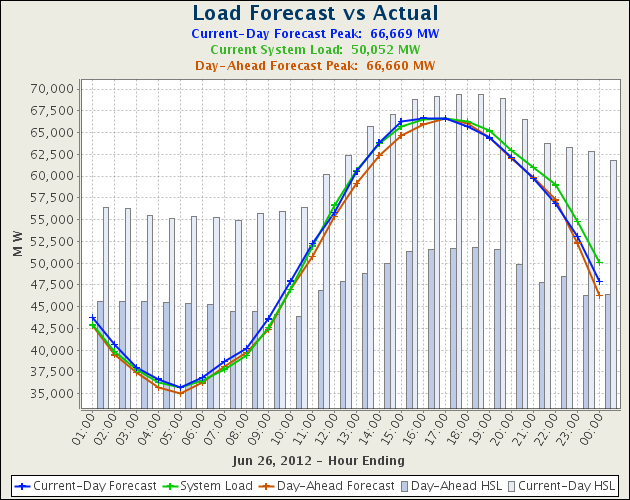@IsailedawayfromFR First look at a daily demand curve:

So in using round numbers, for this day only, Baseload units are going to be supplying 35 Gigawatts.
But today, another 30 Gigawatts are going to eventually be needed. The won't run most of the time. There is a lot of swing of power that needs to come up and back down. But clearly, most of it isn't going to run most of the time.
Weather forecasts give the system operator decent predictions of what they will see as load and what they will see from wind and solar. The wind may have gusts and moments of lull, but not all over at once. The pressure systems provide fairly predicable power on an day and hourly basis.
Hydro is actually dispatchable, just not on 0 to 100% capacity. Typically you have an allowed stream flow that needs to move so much water per day, but can vary perhaps 25% to 75% on a quick basis, while waiting on other units to come up. Or it can bump up for the peak and pull back for the bottom. For example, Niagara Falls actually produces more at night, when the tourist attraction of the falls isn't needed as much.
Combined cycle natural gas can produce some power in minutes, but to reach full capacity and high-efficiency may take hours for full heat of the steam.
http://www.powerengineeringint.com/articles/print/volume-16/issue-2/features/flexible-power/the-need-for-flexible-speed-0-100-mw-in-minutes.htmlThere are different levels of power payments, contracted base load, daily power bids, immediate spot market pricing, etc. Producers of power modify their output to maximize their payments versus their costs. Gas Turbine units can quickly back off and use less fuel if they are supplying to a spot market that dropped in price due to more supply or less demand.
The plant I work can have an upset condition. With no notice at all, we might drop 80 MW of load (very unusual, but it happens) Some immediate changes in the system can help balance. For example, load drops, system voltage rises, demand increases to the voltage rise helping to draw more load. The frequency can have a impact as well but has to balance over time, easiest to ignore that for our purpose. But somewhere in the system, that 80 MW needs to come off the supply or get wheeled across the system to another area more economic to drop supply.
Does all this help?
Now realize the day night swing is greatly changed throughout the year.

Weather can make quite a difference, a cold snap in the winter can make a near peak demand at night.
